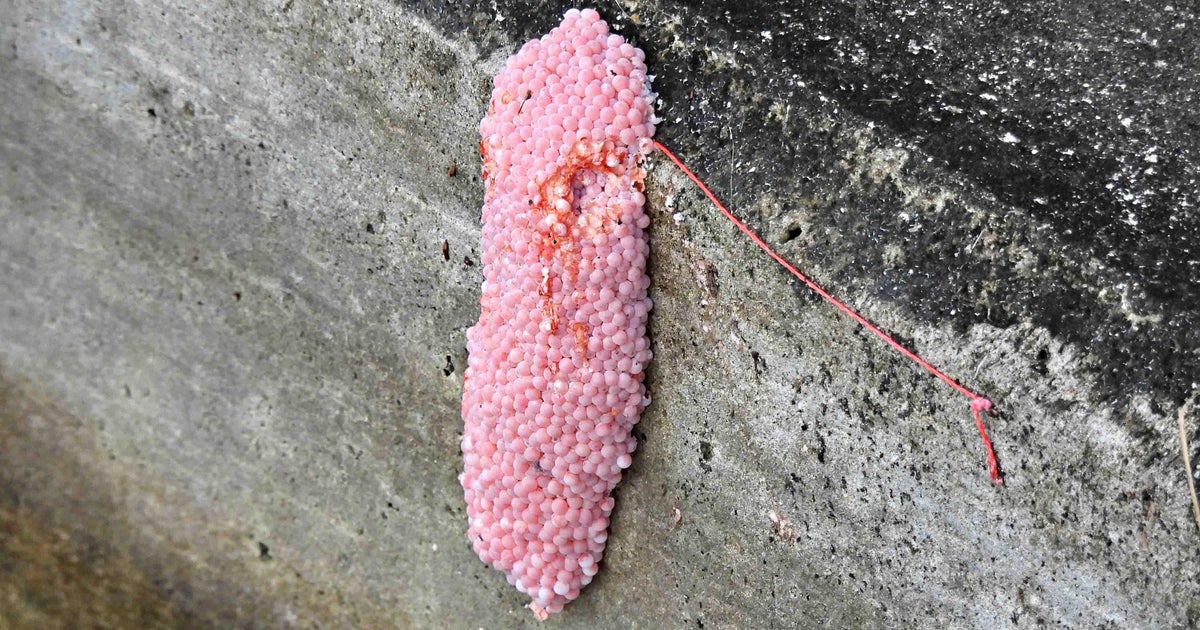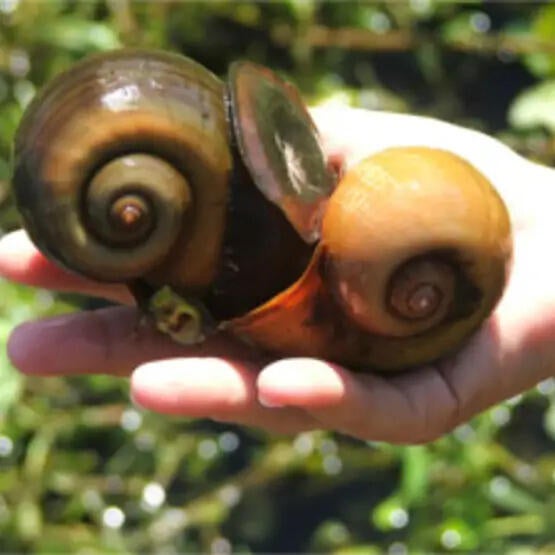Florida is home to many species of animals — some native and some invasive. From alligators and iguanas to pythons and bears, the Sunshine State boasts a diverse ecosystem that supports a wide range of fauna.
However, suppose you’ve ever come across what appears to be pink blobs of boba attached to concrete or plants near bodies of water. In that case, you’ve come across a clutch of eggs laid by what the Florida Fish and Wildlife Conservation Commission (FWC) dubs one of the “world’s worst invaders.”
It’s the apple snail.
According to the FWC, Florida hosts several species of Pomacea apple snails, including the native Florida apple snail, and four exotic species native to South America: the island apple snail, channeled apple snail, spike-topped apple snail and the titan apple snail.
FWC Fish and Wildlife Research Institute
As of 2013, exotic populations have been seen in at least 29 watersheds in 38 of Florida’s 67 counties, with the most abundant species being the island apple snail. Although these snails are typically found in freshwater, the FWC said some can tolerate brackish water. For example, the island snail has been observed in tidally influenced portions of rivers and along seawalls of South Florida canals.
Why is the FWC concerned about exotic apple snails?
In the last decade, apple snails have received the FWC’s attention because of their ability to damage wetland crops through foraging.
“Channeled and island apple snails are opportunistic feeders that consume a variety of aquatic vegetation, fruits and vegetables, algae, remains of decaying organisms, and other snail eggs,” the agency said. “Because of damage to crops, the channeled apple snail is listed as one of the world’s worst invaders.”
Florida Fish and Wildlife Conservation Commission
The FWC also said there is concern that the snail’s “haphazard appetite” for large aquatic vegetation could alter aquatic ecosystems. In Florida, especially, there is also concern that the native Florida apple snail’s population could be displaced.
Currently, there is little the FWC can do to curb exotic apple snail populations, especially because most established exotic species are often a part of the exotic pet trade. According to the FWC, federal law states that it is illegal for apple snails to be imported across state lines, and the agency suggests that pet owners refrain from releasing them into the wild.
Similarities in appearance make identification “very difficult”
According to the FWC, apple snails vary in size and shape, with the Florida apple snail being around two to three inches long and having a shell that is often flat across the top. Meanwhile, the island and channeled apple snails are typically larger and have a distinct channel between the whorls. Specifically, the island apple snail is the largest known species in the state, with shell sizes alone growing up to five inches in length.
The FWC said similarities in appearances among the non-native apple snail species make identification “very difficult.”
Wild snail populations range in shell color from yellow to brownish-black and may contain stripes or dimpling. Also, the FWC said selective breeding in the aquarium trade has led to other color variations and patterns, with some snails having bright shell colors like yellow-orange, yellow-green or copper, and their foot tissues having pigment variations ranging from yellow to orange to gray.
The best way to identify the snails is by their eggs
While the Florida apple snail can take up to six months to reach sexual maturity, the exotic apple snail species — island and channeled — can reach sexual maturity at around two to three months of age.
“These species lay eggs above the waterline on almost any hard surface,” the FWC said.
The agency said that the size, shape and number of eggs can help identify species, but egg clutches can also vary in size, color and number of eggs depending on water conditions, season, food availability and the snail’s age.
The FWC said the egg clutches of Florida apple snails have the largest individual eggs at around the size of a pea, but the fewest per clutch at around 20 to 80.
Meanwhile, the egg clutches of exotic island apple snails tend to have smaller eggs, slightly larger than a pinhead, and are more densely packed with many egg layers. Typically, the clutch’s length may be several inches and can have up to 2,000 eggs, the FWC said. Channeled apple snail egg clutches have slightly larger eggs and few total eggs, up to 800.
When laid, Florida apple snail eggs are a pale salmon color that quickly turns white. However, island and channeled apple snails lay pink eggs that turn white-gray before hatching.
“Unfortunately, using egg masses for apple snail identification can be difficult because of variations caused by environmental factors and all turn white before hatching,” the FWC said.
The FWC advises that when anyone comes across island and channeled apple snail egg clutches, they should “be crushed whenever possible.”
“Scraping eggs and letting them fall to the water does not prevent them from hatching,” the agency said.
The FWC also said that if you come across Florida apple snail egg clutches, they should be left undisturbed.




